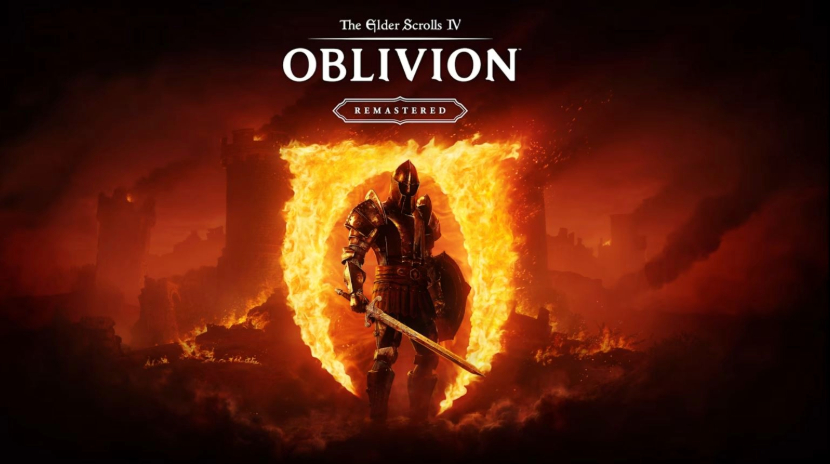Nearly 20 years later, Elder Scrolls IV: Oblivion is back. Rather than a sequel or reboot, it brings new life to one of Bethesda’s most fascinating RPG titles to date with a remastered growth. This updated version was rebuilt with Unreal Engine 5 by the Virtuos team and does not reinvent the wheels, but the ride certainly does smoothen. And faster. And it’s very beautiful.
Don’t make mistakes: this is still forgetfulness, warts, and everything. As evidenced by the immediate crash in the opening dungeon. However, with its revamped visuals, snappier UI, long-term sprint buttons and a rebalanced (still incomplete) leveling system, the Remaster strongly argues why Cyrodil remains one of the most fascinating open worlds ever created. I destroyed my social life and won nearly 90 hours, but I’m not finished yet.
A sophisticated type of chaos
For those unfamiliar, Forgotten is a vast fantasy RPG in the heart of Tamriel, where you race a prisoner-turned-hero to prevent demonic invasion. Along the way, complete quests, rank up in multiple guilds, revealing a wider plot at the heart of the oblivion story. And like a good RPG, you will often find yourself lost in side quests that feel like a small story of yourself.
I polished it, but it’s not perfect
The graphical overhaul is an instantly noticeable change and an impressive change. The scenery is lush, the lighting is dramatic, and the environment stretches far beyond what the original can manage. However, character models are hits or misses. Many NPCs still seem to wander from the creepy valley, with occasional cross-eyed gazes and mannequin smiles adding an unintended touch of humor (or horror) to the gameplay.
Performance is generally solid, but not perfect. In the playthrough, I came across some technical issues and some of the classic Janks. The game that crashes in the opening dungeon was an early warning that this was, after all, a Bethesda title. But from that point on, I rarely interfered with my experience. The original game had to hard-lock several days of playdeep and resume the entire game from the start thanks to glitching in timing and poor saving choices. Luckily, this time there was no such issue.
The developers here were able to clearly make wise decisions about what to modernize and what to store, and strike a balance that respects the original without feeling completely tied up.
System: good, bad, forgetful
One of the most welcome changes is the revised leveling system that fixes many of the issues with the 2006 original. The original’s infamous leveling system essentially meant that by doing a “wrong” rebasing, you could accidentally make the game difficult on your own.
Leveling was tied to your main skills, and basically, if you didn’t micromanage it all completely and you didn’t maximize your points, the game could be fast and cruelly disproportionate. The remaster scrapes the rigid system that supports virtue points and more tolerant structures, giving you breathing room to build your character without being punished by playing with nature. The progression feels better along the line with modern RPGs, rewarding you for using your skills rather than punishing you for being too focused on your strengths.
Still, enemy scaling remains in a painful place. While fine tuning reduces penalty, the core issues continue. The enemies of the world will level with you. In other words, late-match battles can feel strangely disconnected from the typical late-game power fantasy. Being knocked by a bandit in high-rise gear is an immersion breaker and can be underestimated.
The nostalgia of the story
Despite its quirk, Oblivion tells some of Bethesda’s best stories. The quests in the action are outstanding, with Dark Brotherhood Ark in particular remaining a master class. Even the main quest, reinforced by Shaun Bean’s incredibly influential performance, is far better than expected.
Not all NPCs are memorable, and some dialogues remain rigid, but the nature of the world is more than compensated. Oblivion has the humor and a strange sense of charm that many modern RPGs lack, and is part of what makes returning to Cyrodiil so unique and fun.
Final Thoughts
Elder Scrolls IV: Oblivion Remastered is not a reinvention, it’s a complete recovery. This improvement makes the game much more accessible without blowing up the habit that initially gave you a character. Yes, there’s still a nuisance. Enemy scaling is not fixed. The face is still strange and you can break the game with homemade spells. But in a way, it makes oblivion special.
It’s a hassle. That’s great. It’s fun.
If you’re back to Cyrodiil a few years later, this remaster will probably feel like a dream. If you are stepping on the gate of forgetting for the first time, as one security guard might say, “I’ll pay with your blood.” Or, of course, for the Emperor, enjoy the ride.
4 and a half stars (out of 5)
Highlights: Revamped visuals. UI improvements; Rebalance leveling system. Loving Quest Line and Thompson Ark
Low light: enemy scaling is still frustrating. Face animations remain troubling. Occasionally bugs and crashes
Developer: Master (Remastered) / Bethesda Game Studio (Original)
Publisher: Bethesda Softworks
Platforms: PlayStation 5, Xbox Series X, PC
Available: Now
Reviews conducted on PlayStation 5 are conducted using pre-release code provided by the publisher.

